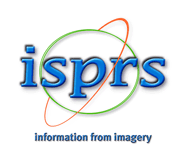SF-CODnet: Spatial-Frequency Framework with Weak Sample Learning Strategy for Detecting Camouflaged Wildlife Objects
Keywords: Camouflaged Object Detection, Weak Examples, Wildlife Objects, Evaluation Metrics
Abstract. The problem of camouflaged object detection (COD) is to identify hidden objects in their environment. This problem remained unsolved for many years until the advent of deep learning methods. The style of invisibility of the camouflaged object plays a significant role, which is difficult to capture only in the spatial area. At the same time, the structural properties of camouflaged patterns are characterized by a high discriminatory ability to distinguish camouflaged objects from the background. The spatial-frequency model called SF-CODnet achieves accurate structural segmentation, realizing not only semantic but also instance segmentation of wildlife camouflage objects. A learning strategy to synthesize weak samples also helped to generalize the COD ability of the baseline model. Unlike other popular learning strategies that improve samples as much as possible before training, our weak sample synthesis learning strategy helps to generalize the base model's COD ability. Such augmentation strategy and the proposed SF-CODnet model were tested using three publicly available datasets: CAMO, COD10K, and NC4K with good results, outperforming some COD models.





